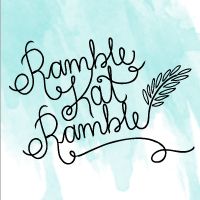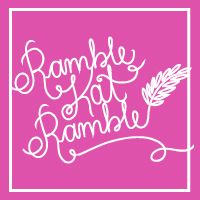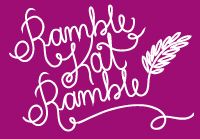Hello Ramblers! I'm Allyson and I write a natural health and wellness blog you can read here. That's my space to talk about living a natural and healthy life through yoga, eating well and practicing self-love. I am a certified Hatha and Vinyasa Yoga Teacher and have been teaching for six months, although I have been practicing yoga for over five years. Kat has asked me to write a Yoga 101 for anyone interested in starting a practice but maybe you're a little confused when yogis start talking about vinyasa, hatha, savasana and prana.
The Different Types of Yoga
There are six basic types of yoga with hundreds of sub-styles so with enough persistence you should be able to find a class that you love. Let me explain the basic styles for you... (Ashtanga, as well as Kundalini, are not what I am trained in so this is a brief idea. I encourage you to educated yourself further if you are interested)
- Hatha - this is your basic yoga. This style is really for everybody and is especially good for beginners since it is gentle; poses are held for around 30 seconds. Look for classes that mention 'gentle flow,' 'beginner,' or 'stretch.'
- Vinyasa - this is a quicker moving style. A 'vinyasa' is a series of poses done in succession; generally downward facing dog, chaturanga, cobra, downward facing dog. This style is for people looking to increase their heart rate and have a bit of a workout while doing their body some good. Look for 'flow' or 'fit' classes.
- Yin - this style is very slow. Yin uses the same poses as Hatha and Vinyasa but holds each pose for up to five minutes. This style is perfect for someone who really wants to relax and unwind but not for children or teens as the intense stretching isn't good for growing bodies. Look for classes called 'restorative.'
- Ashtanga - this is the style that incorporates the eight limbs of yoga. In a class the poses are practiced in a specific series. The series may be practiced in some "flow" classes but generally the class description will mention 'ashtanga'
- Kundalini - this is the most spiritual style of class so it may not be the best fit for someone just looking to exercise. The word kundalini means 'coiled' and it is believed that our life force is coiled at the base of our spine and the practice is meant to uncoil this energy and release it into the body. These classes include chanting and singing, which other styles may not. Most classes will mention the word 'kundalini' in the description.
- Hot - like Hatha but done in a very hot room to encourage detoxification of the body through sweating and the poses are done faster and in a specific order. I actually don't recommend this style of yoga because the heat makes your muscles stretch easier, which can be good, but if you're unaware of your limits this can lead to pulling your muscles and pain. The high temperatures can also lead to heat stroke and other health issues. If you want to try hot yoga look for a studio that is very well ventilated because no one wants to breath in humid air full of everyones sweat and toxins. Because of the heat these classes don't have any prana in them.
Asana-what?
Yoga originated in India so a lot of the yoga lingo is in Sanskrit. If you've ever been to a class where the teacher uses the Sanskrit words it can be very confusing so I'll translate the most common ones.
- Asana - (ah-sah-nah) this is the Sanskrit would for pose. Every pose has this word in the name: savasana (corpse pose) , halasana (plow pose), vrksasana (tree pose).
- Namaste - (nom-ah-stay) the most basic translation is 'The Light in me sees the Light in you.' Yoga teachers say this prayer at the end of class as a way of honoring their students. Feel free to say namaste in return or sit quietly; whichever you're comfortable with.
- Savasana - (shiv-ah-sah-nah or sahv-ah-
sah-nah) this is the pose that every class ends with. Sav means corpse so this is Corpse Pose. It is meant to allow your entire body and mind a few minutes of complete relaxation as well as let the energy (prana) you created settle into the body. - Prana -(prah-nah) this means energy or life force. During a yoga class prana is created through moving with intention. Prana = good vibes!
I hope the helps you go into the world of yoga with a little more confidence. I know anytime we try something new it can seem a little scary, but I encourage you to try out yoga with an open mind and I guarantee you will find a practice you love.


















Thanks for featuring this on your blog! So much great information (:
ReplyDeleteAllyson is awesome, you should definitely check out her blog!
ReplyDelete